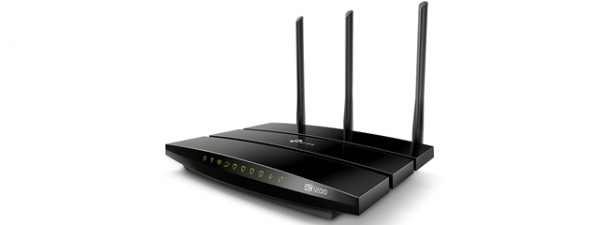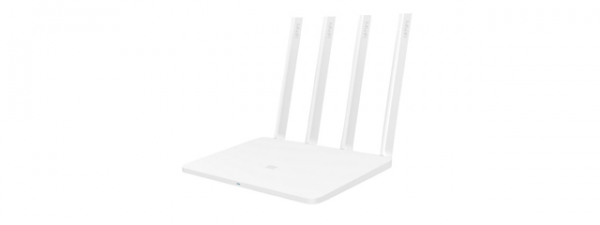
Tenda is a Chinese company that manufactures very affordable wireless routers. We recently received for testing their Tenda AC10 - an AC1200 wireless router with support for modern wireless networking standards. We were curious to see whether it offers fast transfers and a quality user experience. If you want to know whether to buy the Tenda AC10 wireless router, read this review:
NOTE: We received the Tenda AC10 wireless router for testing, from Gearbest.com. It is an online shop that offers excellent prices and international free shipping. You can buy this router at a discount price, from here.
Tenda AC10 AC1200: Who is it good for?
This router is a suitable choice for:
- People who have a low budget
- Users who are not interested in security
- Home networks with devices that operate mostly on the 2.4 GHz wireless band
- People who do not need to connect a USB device to their wireless router
Pros and cons
Tenda AC10 has the following positives:
- Affordable pricing
- The performance of the 2.4 GHz WiFi band is better than what you get from other AC1200 wireless routers
- The Tenda WiFi mobile app is responsive and easy to use
- You can mount it on walls
Unfortunately, there are many downsides to using this router:
- The firmware and the mobile app do not meet modern expectations regarding security
- The multi-lingual support is weak. The user interface is available only in English and Chinese
- The user interface for administering this device is rough, with typos and mistakes
- There is no Help available in the admin user interface
- It does not offer a USB port
Verdict
The main selling points of the Tenda AC10 AC1200 wireless router are the low price and its surprising performance on the 2.4 GHz band. If you value price above anything else and you have a small or medium-sized apartment, with network devices that use mostly the 2.4 GHz wireless frequency, then Tenda AC10 is a good choice. Otherwise, you should look at AC1200 routers from other brands, which offer better firmware, multi-lingual support, and improved security.
Unboxing the Tenda AC10 AC1200 wireless router
The Tenda AC10 wireless router comes in a black box with orange accents, traditional to the Tenda brand. On the top, you see a picture of the device, alongside its most essential features. Since we received this router straight from China, we got the packaging used for the Chinese market. In the US and European markets, all the writing on the box is in English.
On the back side of the box, you see other information about this product's features, including a comparison with other routers from Tenda. Open the box, and you see all the items that are bundled.
You should find the following items: the router, the power supply, the user manual, the warranty, and a short network cable.
The unboxing experience is quick and painless. Also, Tenda bundles everything you need to set up your new wireless router.
Hardware specifications and design
Tenda AC10 is a reasonably good-looking wireless router. It is made of plastic, it has a matte finish, and only a few LED lights:
- sys - indicating whether the router is turned on
- WAN - indicating whether the connection to the internet works
- LAN - indicating whether you have PCs connected through Ethernet cables
- WiFi - indicating whether the wireless broadcast is turned on
Tenda AC10 has a single core Realtek RTL8197FS processor running at 1GHz, 128 MB of DDR3 RAM, and 16 MB of storage space for the firmware. It offers support for the 802.11ac Wave 2 standard, and 2x2 MU-MIMO transfers, delivered with the help of four external non-detachable antennas. As with many other routers, it can also work using the older 802.11n/b/g wireless standards. The total theoretical maximum bandwidth is of 1167 Mbps, split as follows: 300 Mbps for the 2.4 GHz band, and 867 Mbps for the 5 GHz band.
On the back side of the router, you can find four Gigabit Ethernet ports, one of which is used for the connection to the internet. Therefore, you can use only three for the local network. You also have buttons for WiFi and WPS, and the power jack. Unfortunately, there is no USB port on the Tenda AC10. However, there is a Tenda AC10U model, with almost identical specifications, and one USB 2.0 port.
On the bottom of the Tenda AC10, you can see the ventilation grids, four plastic feet for placing it on flat surfaces, as well as two holes, for mounting it on walls. There is also a sticker with the connection details for your router.
Tenda AC10 is not large, just 8.6 x 5.5 x 1.9 inches or 220 x 141.5 x 49 mm in length x width x height. It also weighs just 12.3 ounces or 350 grams.
If you would like to read all the official specifications of this product, go to this page: Tenda AC10 Specifications.
Setting up and using the Tenda AC10 AC1200 wireless router
Setting up the Tenda AC10 wireless router is done the same as any other router. Once you turn it on and connect it to the internet, it opens a web browser and loads its quick setup wizard. Enter the details of your internet connection (if necessary), set the name of the wireless network, and its password, and choose whether you want a different password for administering the device. Setting the same password for administering the router as for your wireless network access is a security risk, and we highly recommend that you never do that. Tenda should stop offering this option.
During the quick setup wizard, you cannot personalize the 5 GHz wireless network. Tenda only adds "_5G" to the name you set for the 2.4 GHz band, and uses the same password. Again, it is not a wise choice from a security perspective, and you should load the administration user interface to personalize further the way your wireless network works.
The user interface is simple and split into logical sections. It also looks dated and uses English that is written by a non-native speaker. There are typos and mistakes, made by someone with a not-so-great command of English. Leaving these issues aside, most users should have no issue in finding what they need.
There is no form of built-in Help system and, if you need to understand what a certain setting does, you need to download the user manual from Tenda's website. Also, the user interface is available only in English and Chinese. Other languages are lacking completely.
Regarding advanced settings, you get everything that you need. Knowledgeable users can configure almost everything about how this router works. Beginners though will have a mixed experience: the basics are easy to set but the advanced settings need help documentation, and that is missing from the user interface.
While delving into all settings for the Tenda AC10, we noticed its automatic maintenance feature which, by default, reboots the router every night. Some users might have an issue with that, even though the reboot takes just two minutes. Tenda says that this feature helps you "maintain your router" and "improve performance."
Once you are done configuring the router, start connecting your wireless devices to the network. We had no issues joining all kinds of gadgets, including smartphones, tablets, laptops, smart plugs, wireless printers, a wireless camera and an Xbox One gaming console. The speed we had was excellent on the 2.4 GHz band and lackluster on the 5 GHz band. One aspect we noticed on the 5 GHz band is that the variability of the speed you get while making data transfers degrades dramatically between rooms. For example, here is a network transfer in a room that is close to the router, separated by just one wall. As you can see below, the speed was relatively constant through the duration of the transfer.
When we moved to a room separated from the router by two walls, data transfers had much higher variability, similar to the analysis below. While it is normal for this to happen, what's different about Tenda AC10 is that, on the 5 GHz band, the variability increases much faster than when using other routers in the same situation.
We were pleased by the speed offered by Tenda AC10 on the 2.4 GHz band, and unimpressed by the speed on the 5 GHz band. While the administration user interface is not complicated, it does have typos, it lacks any form of Help documentation, and beginners will have problems in configuring the more advanced settings.
If you want to know exact details about the wireless performance of this router, go to the next page of this review.


 26.04.2018
26.04.2018 














